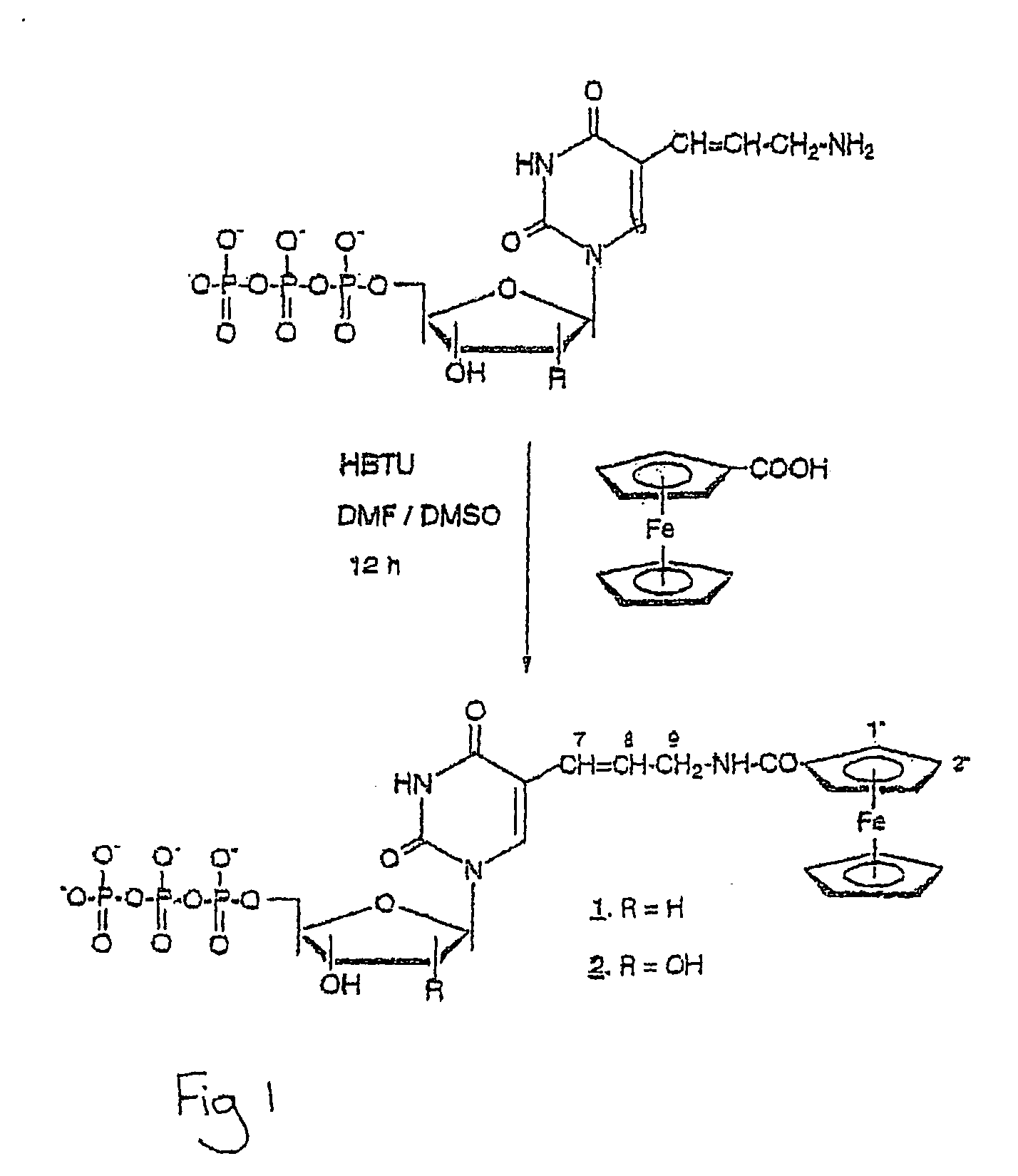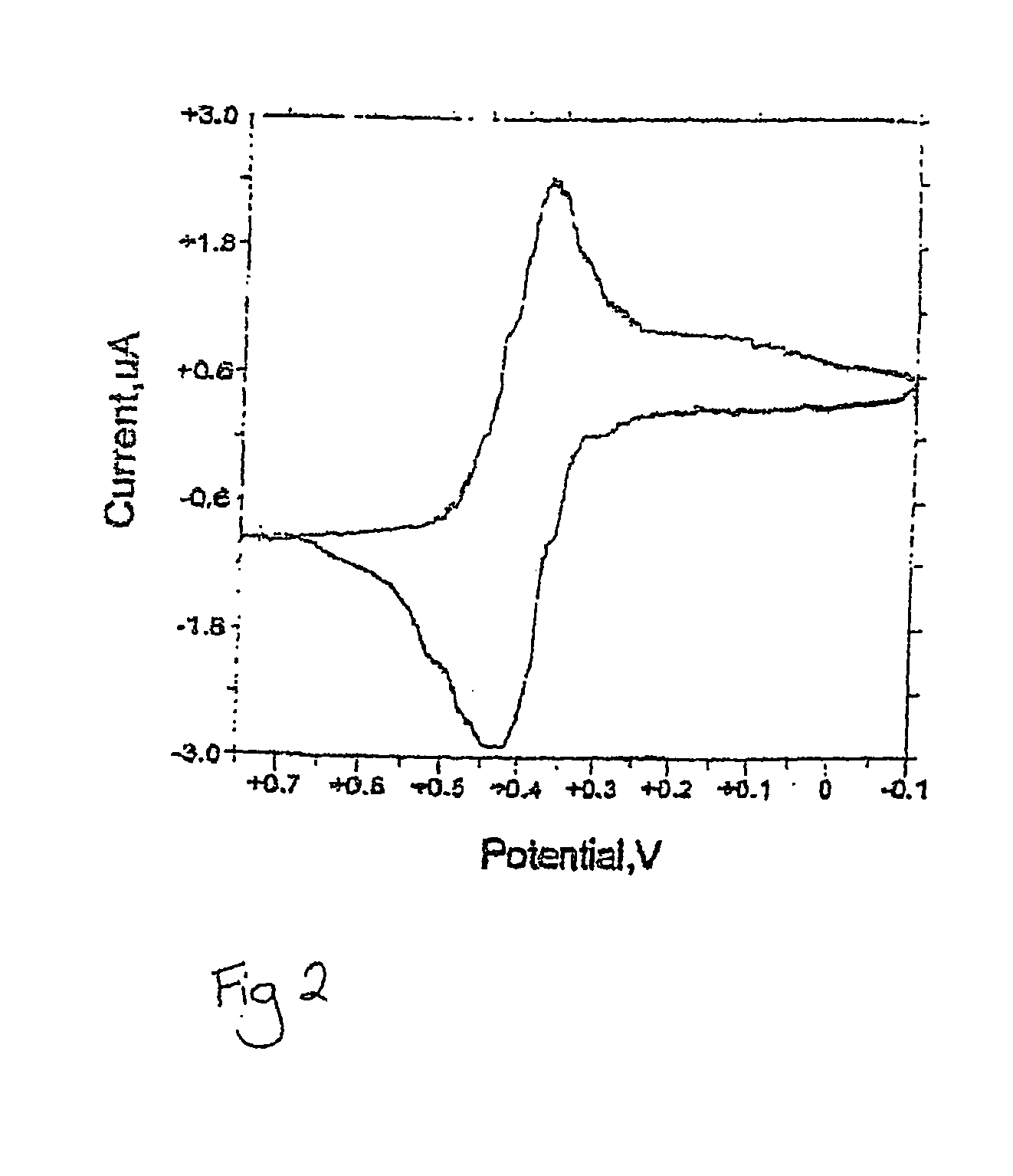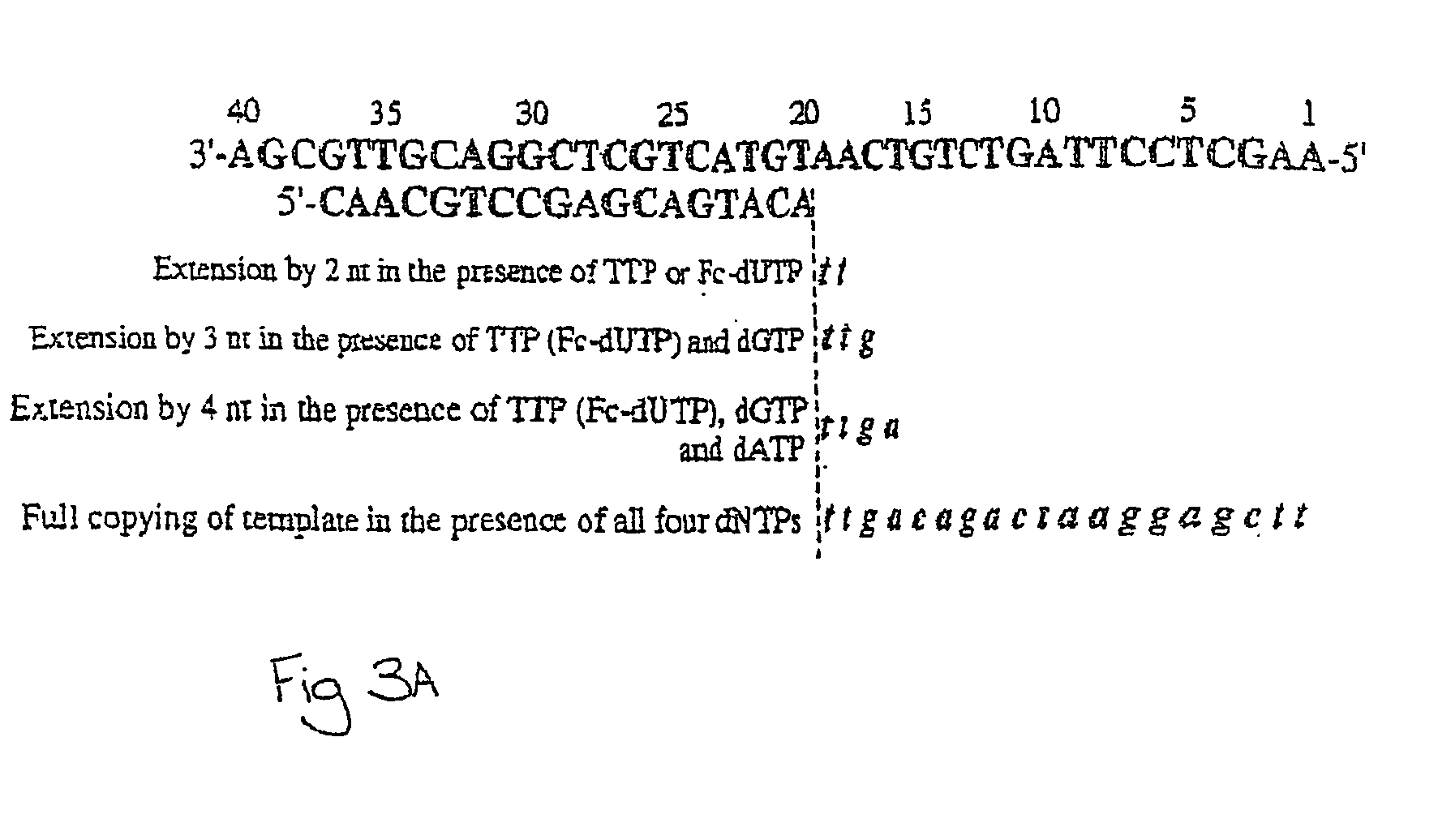Enzymatic redox labelling of nucleic acids
a technology of enzymatic redox and nucleic acids, applied in the field of enzymatic redox labelling of nucleic acids, can solve the problems of short isotope half-live, potential health risk of radioactive constructs, and relatively cumbersome detection methods, and achieve the effect of increasing the rigidity of the linker
- Summary
- Abstract
- Description
- Claims
- Application Information
AI Technical Summary
Benefits of technology
Problems solved by technology
Method used
Image
Examples
example 1
Synthesis of Fc-dUTP and Fc-UTP
[0114] A 45 μmol sample of 5-(trans-3-aminopropenyl-1) 2′-deoxyuridine 5′-triphosphate was evaporated twice from absolute ethanol to remove traces of water before dissolving in 1 ml anhydrous DMF. A solution of 23 mg (0.1 mmol) ferrocenecarboxylic acid in DMSO and 37.9 mg (0.1 mmol) solid HBTU were added to the nucleotide solution with stirring until dissolution of HBTU and the mixture incubated at room temperature overnight. The reaction mixture was diluted with 20 ml of 5 mM 2-mercaptoethanol in water and the yellow ferrocenecarboxylic acid precipitate removed with a 0.45 μm polypropylene membrane filter (Gelman Sciences). The filtrate was applied to a DEAE-cellulose column (1×25 cm) equilibrated with 5 mM aqueous 2-mercaptoethanol and separated with a linear gradient of TEAB (0-0.35 M, 500 ml) in 5 mM 2-mercaptoethanol. Product eluted as a large peak at the end of the gradient.
[0115] The product fractions were pooled, evaporated, and purified by R...
example 2
Characterisation
[0117] Ferrocene-labelled dUTP (Fc-dUTP, 1) and UTP (Fc-UTP, 2) derivatives (FIG. 1) were successfully synthesized by reaction of the 5-(3-aminopropenyl)-nucleoside triphosphates with ferrocenecarboxylic acid in the presence of HBTU. This procedure generates a relatively rigid 6-bond linkage between the nucleobase and redox label. The products were purified to homogeneity by ion-exchange chromatography followed by RP HPLC. The yields of both products were relatively low (30% for Fc-dUTP and 7% for Fc-UTP), probably due to steric hindrance in the course of the reaction. We have also used this procedure to synthesize a dUTP derivative adducted to ferroceneacetic acid.
[0118] Fc-dUTP and Fc-UTP have characteristic absorption spectra which correspond to a superposition of spectra for the modified nucleotide and ferrocene carboxamide constituents. They have a strong absorption in the UV region and a seal, broad peak characteristics of ferrocene near 440 nm. Cyclic voltam...
example 3
[0119] Cyclic voltammograms were recorded with an electrochemical analyser (BAS). The three-electrode system consisted of a glassy carbon working electrode, a Ag / AgCl (saturated KCl) reference electrode (Eref=206 mV) and a platinum counter electrode. Experiments were performed in a 5 ml electrochemical cell containing 0.8 mM Fc-NTP in 20 mM tris-acetate (pH 7.4), 100 mM KCl, and 1 mM MgCl2 at a scan rate of 20 mV / s. The scan range was from −0.1 to +0.8 V (vs. Ag / AgCl). (See FIG. 2).
PUM
| Property | Measurement | Unit |
|---|---|---|
| Electric potential / voltage | aaaaa | aaaaa |
| Electric potential / voltage | aaaaa | aaaaa |
| Length | aaaaa | aaaaa |
Abstract
Description
Claims
Application Information
 Login to View More
Login to View More - R&D
- Intellectual Property
- Life Sciences
- Materials
- Tech Scout
- Unparalleled Data Quality
- Higher Quality Content
- 60% Fewer Hallucinations
Browse by: Latest US Patents, China's latest patents, Technical Efficacy Thesaurus, Application Domain, Technology Topic, Popular Technical Reports.
© 2025 PatSnap. All rights reserved.Legal|Privacy policy|Modern Slavery Act Transparency Statement|Sitemap|About US| Contact US: help@patsnap.com



